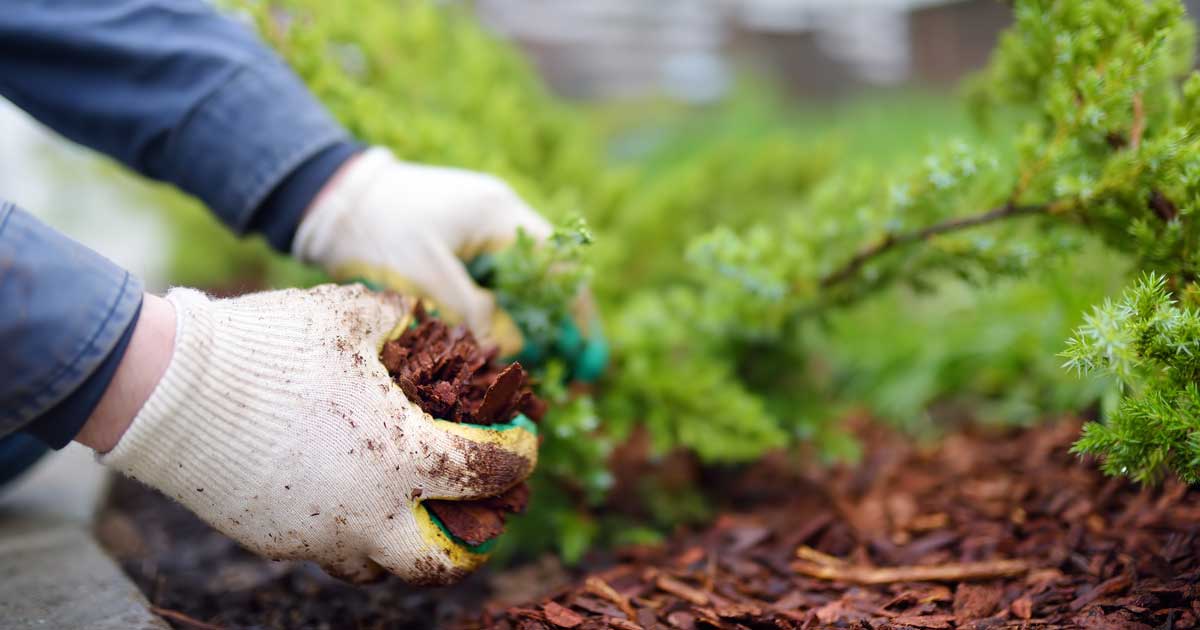By Kim Toscano
Whether winter’s chill is on the way or Jack Frost has already arrived, cold weather means a few extra precautions for the garden. One of the simplest ways we can protect plants in winter is by applying mulch. But don’t be too eager to get that mulch out into the garden. Not all plants benefit from a winter blanket. And putting mulch out too early can do more harm than good.
Where to Apply Winter Mulch
Winter mulch helps preserve soil moisture and moderate soil temperatures during the winter months. Here’s a look at which plants benefit, and which do not.
Shallow-Rooted Plants
Winter in the Southern states tends to come in waves, with warm days sprinkled among frozen ones. Likewise, soil temperatures tend to rise during the day and drop at night, which can cause alternating freezing and thawing of the soil. All those temperature fluctuations put a lot of stress on plants and even cause soils to heave, lifting shallow-rooted plants and bulbs right out of the ground. Giving shallow-rooted perennials such as heucherella, heuchera, astilbe, and strawberry a layer of winter mulch helps regulate soil temperatures and break the freeze-thaw cycle.

Cold-Sensitive Plants
As gardeners, we like to push the limits when it comes to cold hardiness. Plants that are on the edge of their winter hardiness zone will benefit from a protective layer of mulch to insulate the roots and crown over winter. The same is true for newly-planted perennials, trees, and shrubs. When mulching around trees and shrubs, keep a small mulch-free zone around the base of the plant to limit pest problems: about 3- to 4-inches around shrubs and 6- to 12-inches around tree trunks.

Broadleaf Evergreens
Winter winds add another layer of stress to broadleaf evergreens, which are prone to drying out in winter. Mulch not only insulates plant roots but helps conserve soil moisture for these thirsty plants.
Fruits. Fruiting shrubs and vines, including blueberry and blackberry, benefit from a fresh layer of mulch to conserve soil moisture, protect the crown of the plant, and regulate temperatures over the winter.
Annual Beds
Covering annual beds with a layer of mulch helps prevent soil erosion over the winter. However, in areas where plantings rely on self-sown seed, skip fall mulching as it can interfere with seed germination in spring.

Avoid Winter Mulch with These Plants
Not all plants benefit from winter mulch. Some species, like salvia and veronica, are susceptible to root rot when soils remain too wet during the winter. Likewise, many perennials and herbs, including lavender, sedum, and rosemary, originate on rocky, well-drained soils that drain freely. Mulch can keep these plants too damp and reduce air circulation.

Our native prairies bring us a number of flowering perennials that generally require well-drained soils. Avoid mulching echinacea, gaillardia, black-eyed Susan, salvias, and ornamental grasses, which can be sensitive to winter wetness. It is not surprising that plants from woodland habitats, which are blanketed in fallen leaves each autumn, benefit from mulch, while sun-loving perennials such as dianthus, asters, and daylilies do not. When in doubt, take a cue from Mother Nature.

When to Apply Winter Mulch
Applying mulch too early in the season can prevent plants from hardening off sufficiently to withstand winter weather. Likewise, applying winter mulch before the ground freezes can trap warm air in the soil. The best time to apply winter mulch is after several hard touches of frost, which may be as late as November or December in the South. By this time, the plants have developed cold hardiness and the ground has frozen.
Use organic mulch such as straw, shredded leaves, nut hulls, pine needles, or wood chips. These materials create air spaces that provide optimal insulation. Apply a 2- to 4-inch layer of mulch around trees, shrubs, and perennial beds as needed.












